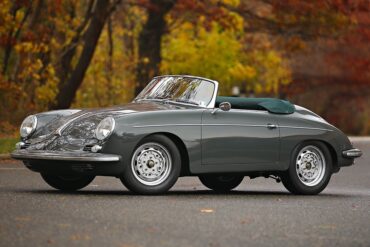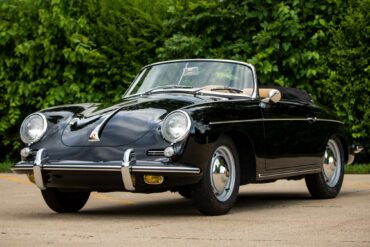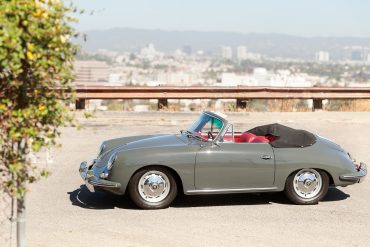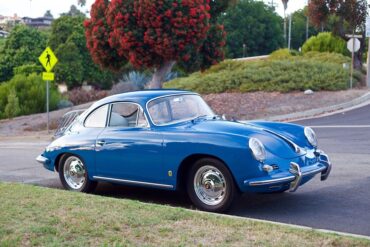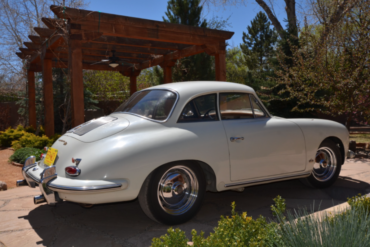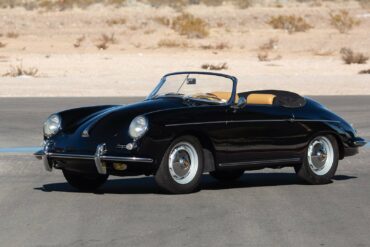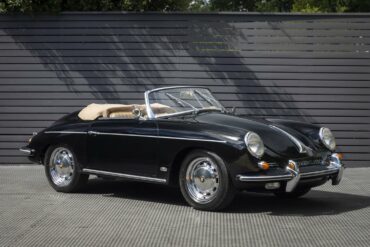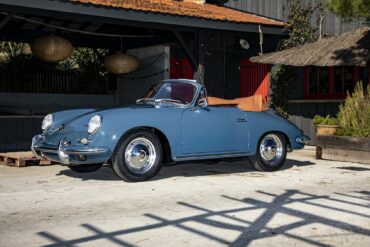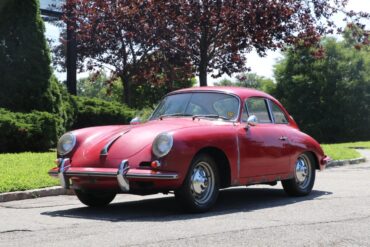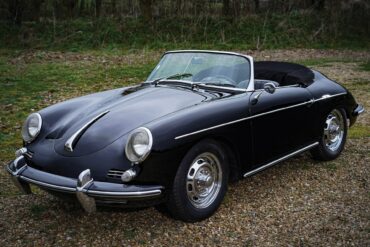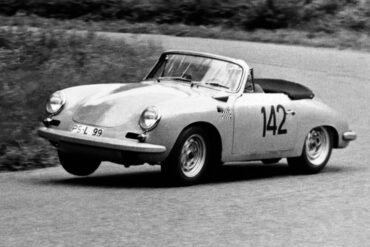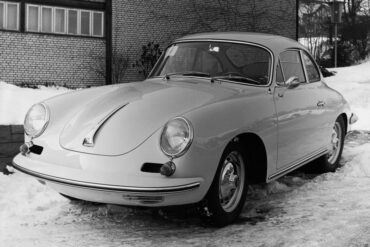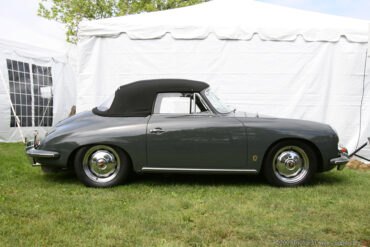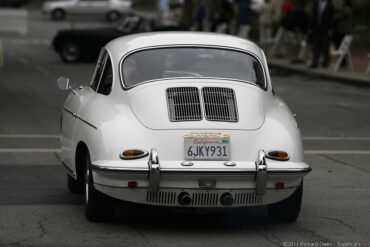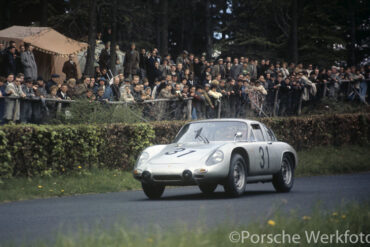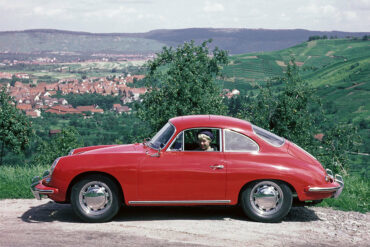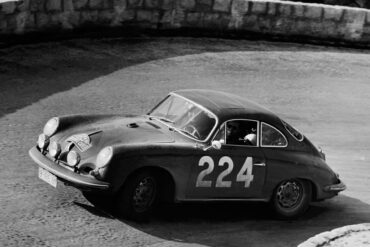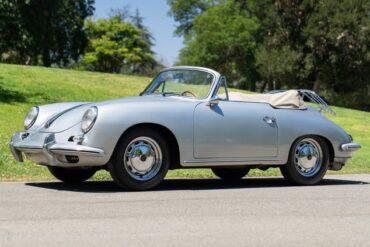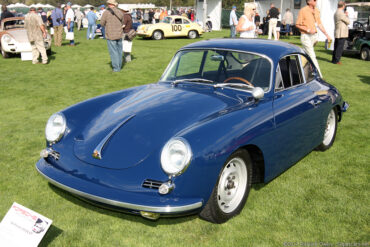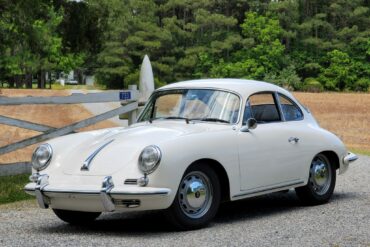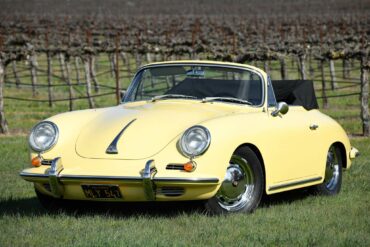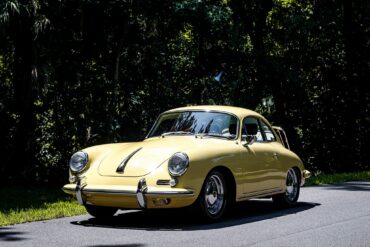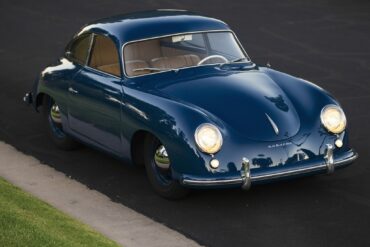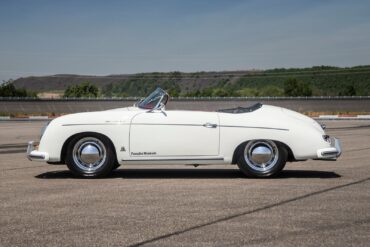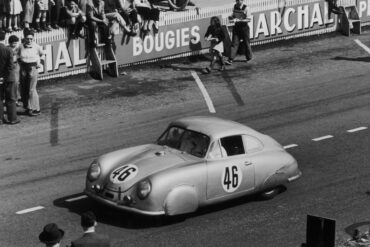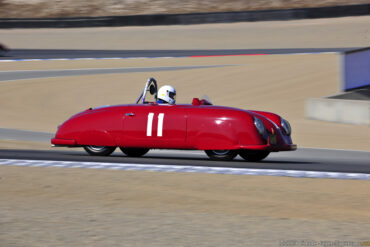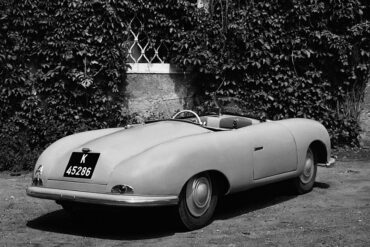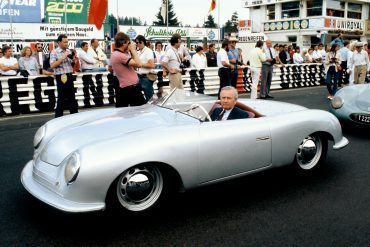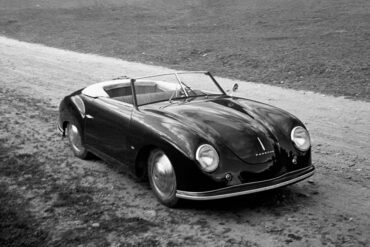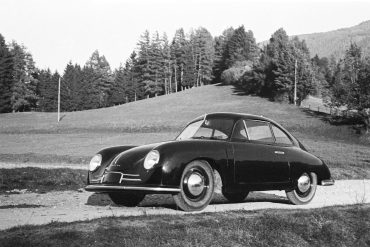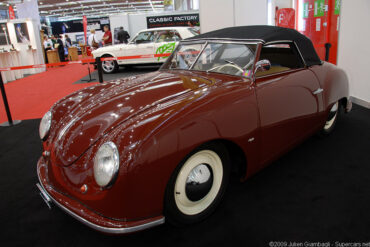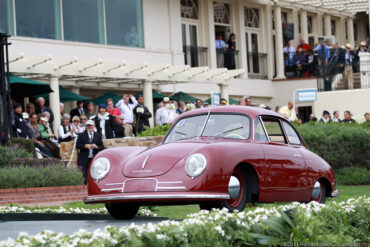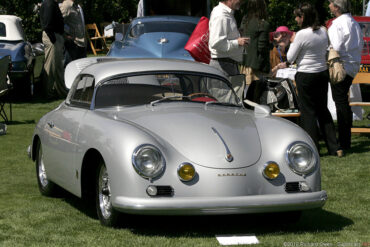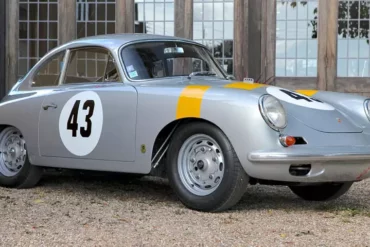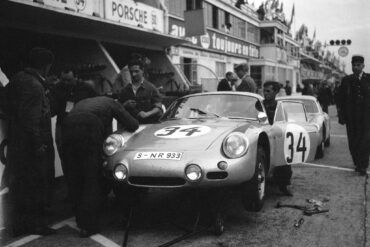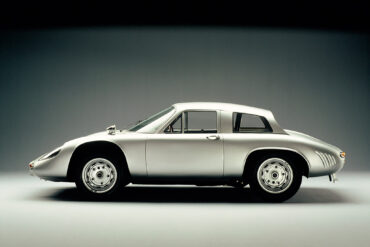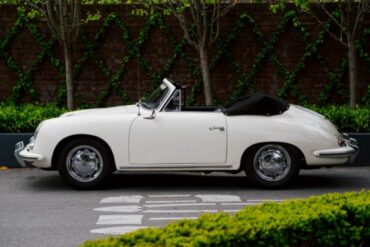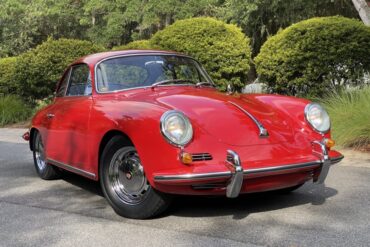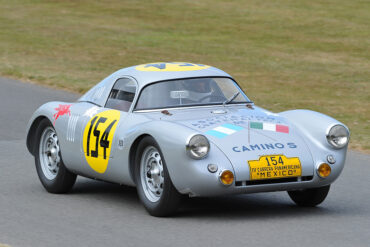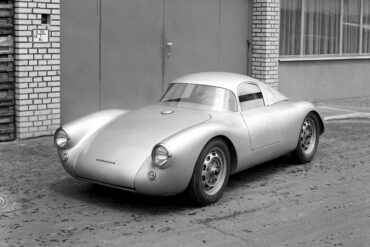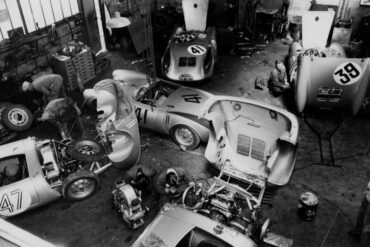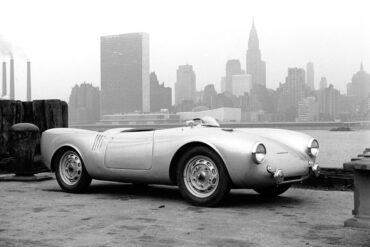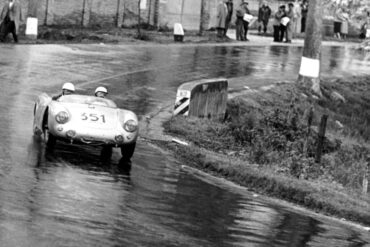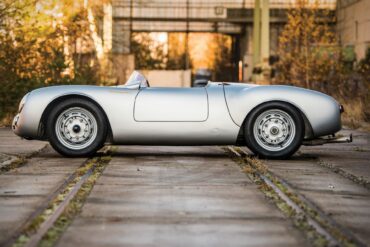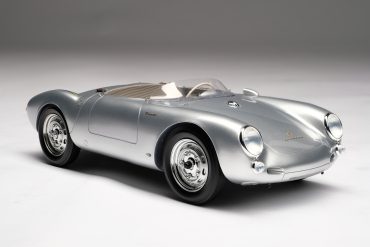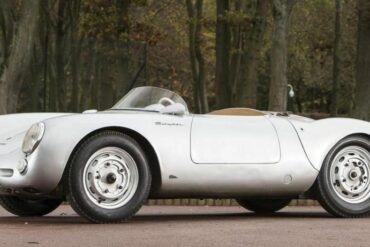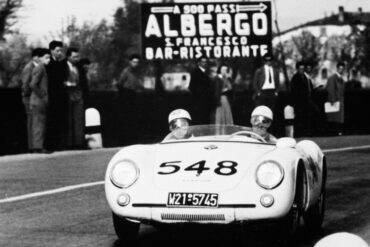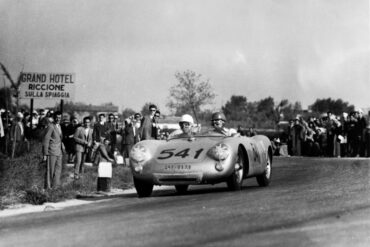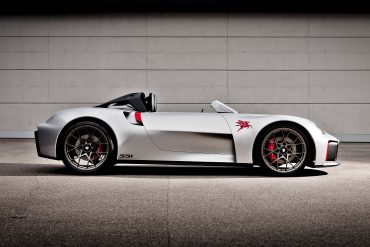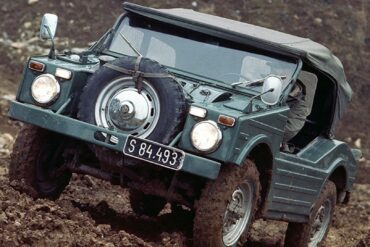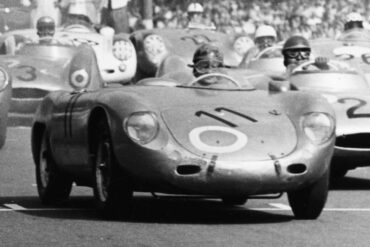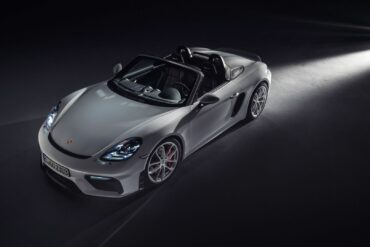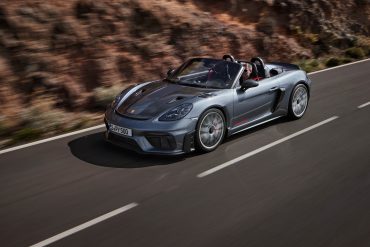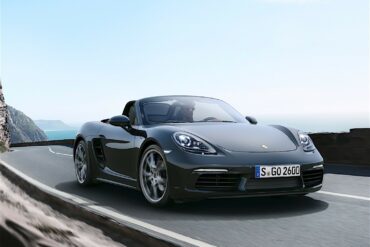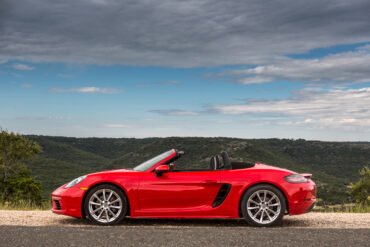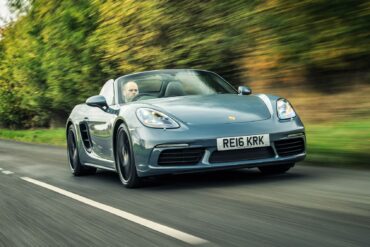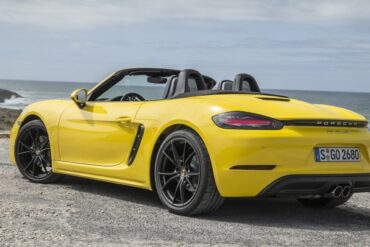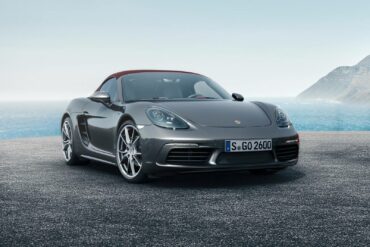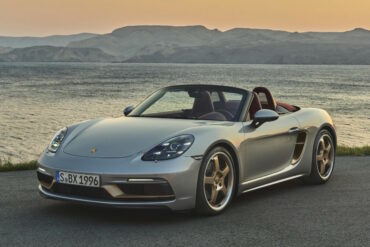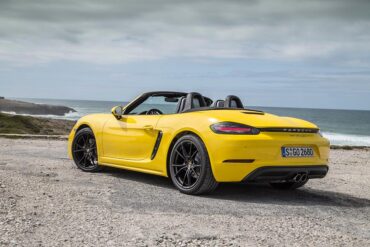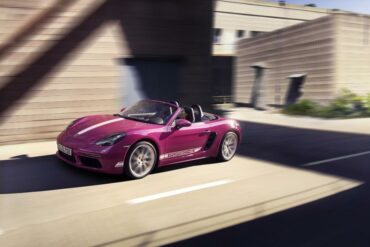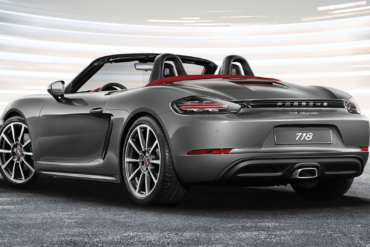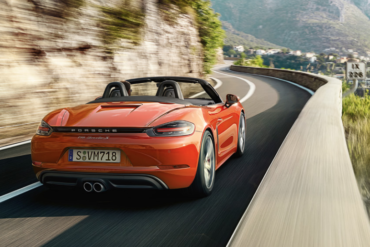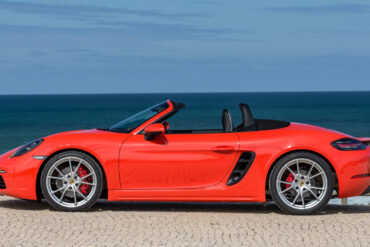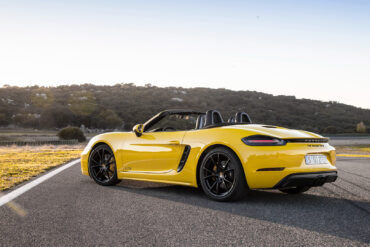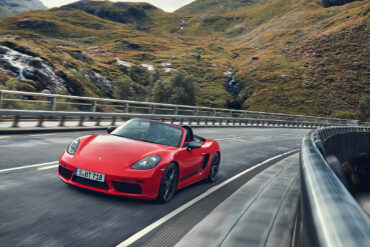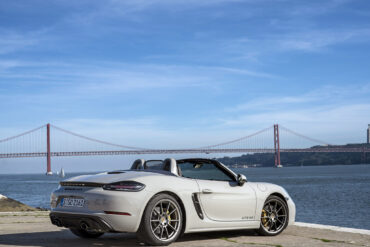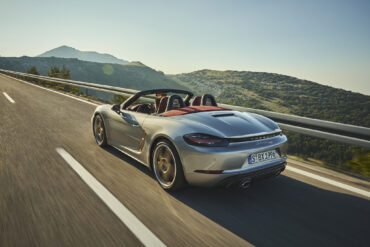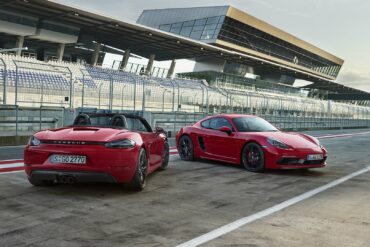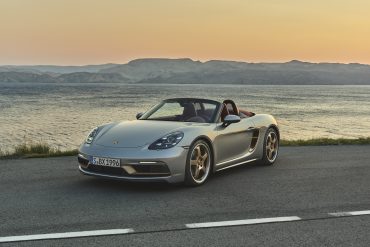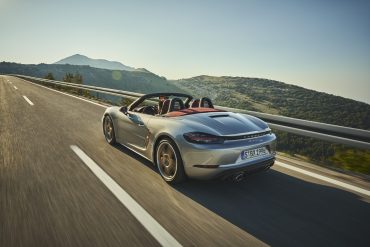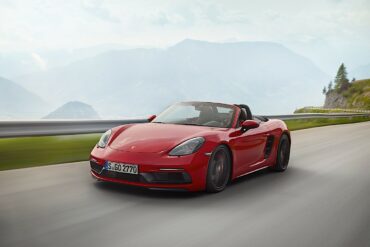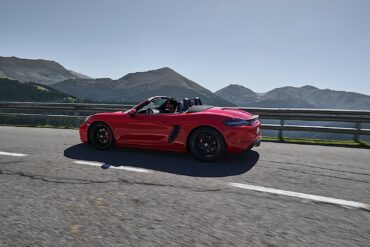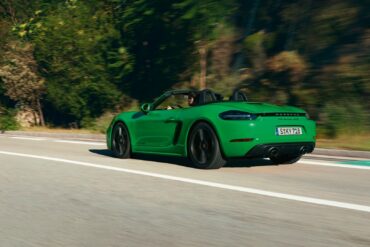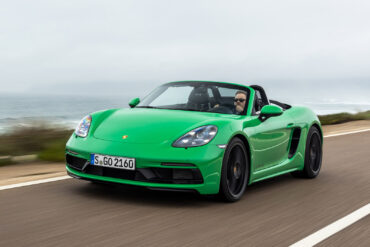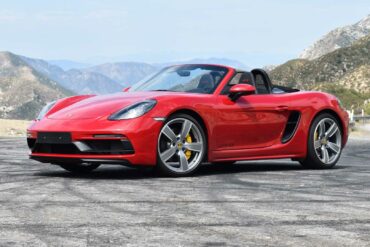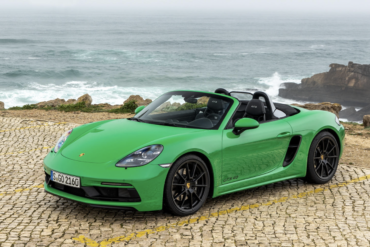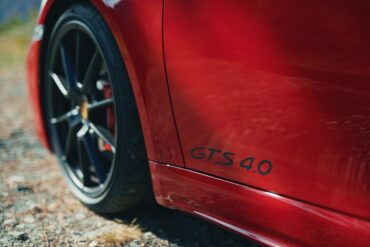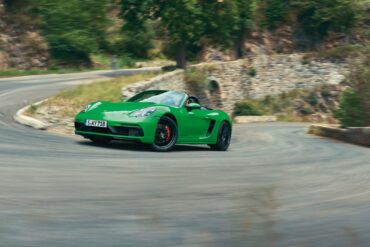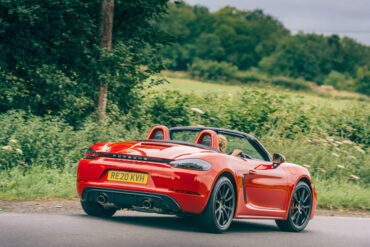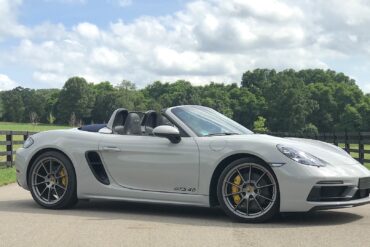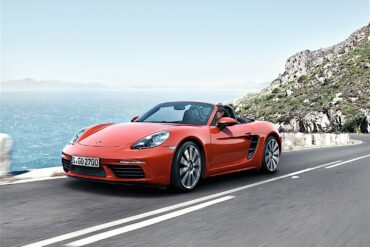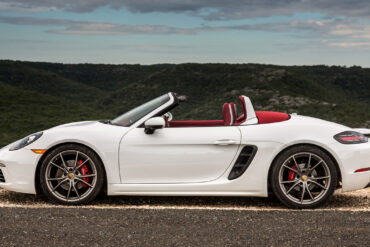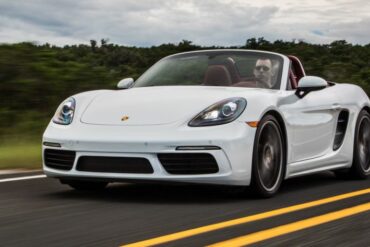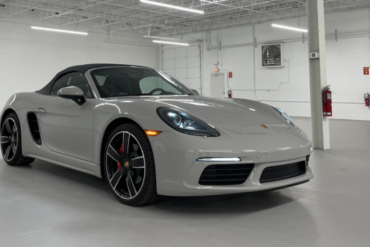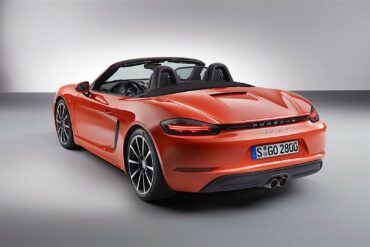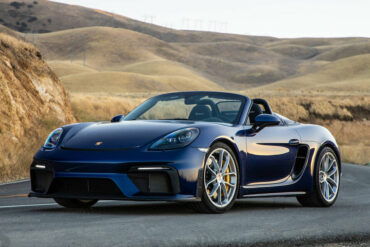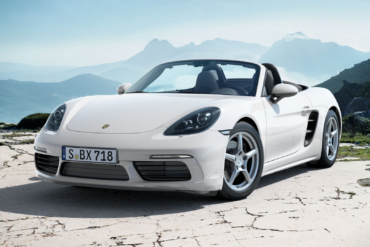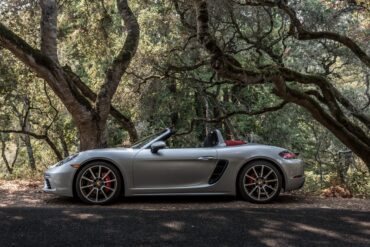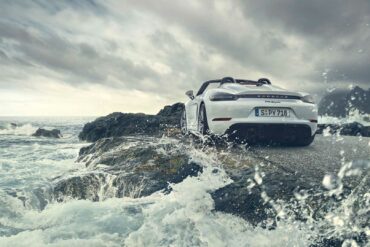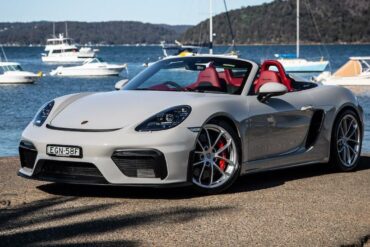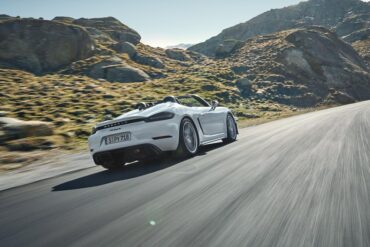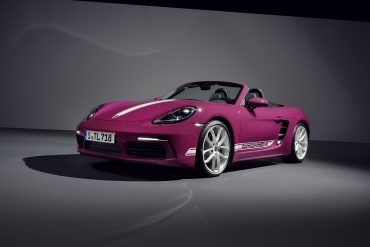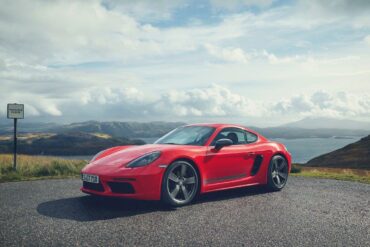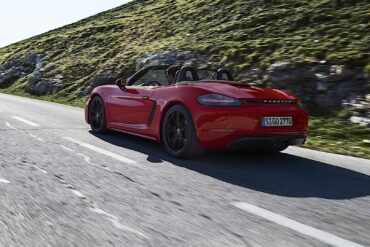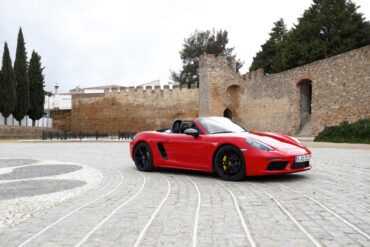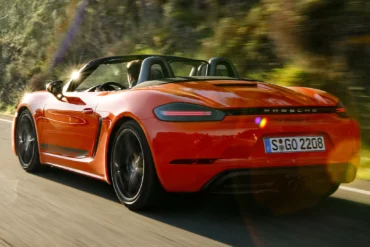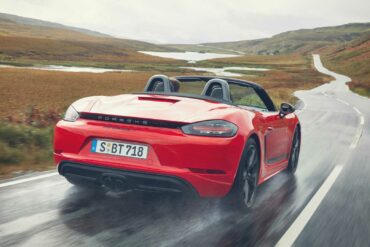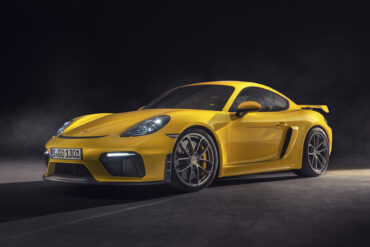1959 – 1963 Porsche 356B/1600 Roadster Technical Specifications Type Series Production Car Production Years 1959 – 1963 Built At Stuttgart,...
In September of 1959 Porsche revealed their fully updated 356 known as the 356B. This had a completely revised body that was more suitable for the American market. The 1600 Super was also known as the 1600 S and that is what we are covering on this page. The 1600 Super sat in the middle of the lineup, below the Super 90 and above the base 1600. There were several variants with the base 1600 S engine, including the Coupe, Cabriolet, Notchback Coupe and Roadster, across both the T5 generation and T6 generation.
1959 – 1963 Porsche 356B/1600 S Cabriolet Technical Specifications Type Series Production Car Production Years 1959 – 1963 Built At...
1959 – 1963 Porsche 356B/1600 S Coupe Technical Specifications Type Series Production Car Production Years 1959 – 1963 Built At...
1961 – 1963 Porsche 356B/1600 S Notchback Coupe Technical Specifications Type Series Production Car Production Years 1959 – 1963 Built...
1959 – 1963 Porsche 356B/1600 S Roadster Technical Specifications Type Series Production Car Production Years 1959 – 1963 Built At...
In September of 1959 Porsche revealed their fully updated 356 known as the 356B. This had a completely revised body that was more suitable for the American market. New to the model was the Type 616/7 Super 90 engine which was an indirect replacement for the Carrera de Luxe models. The engine was fully revised with a new intake manifold, a larger Solex 40 PII-4 carburetor and the Carrera air filters.
1961 – 1963 Porsche 356B/1600 Super 90 Cabriolet Technical Specifications Type Series Production Car Production Years 1959 – 1963 Built...
1961 – 1963 Porsche 356B/1600 Super 90 Coupe Technical Specifications Type Series Production Car Production Years 1959 – 1963 Built...
1961 – 1963 Porsche 356B/1600 Super 90 Notchback Coupe Technical Specifications Type Series Production Car Production Years 1961 – 1963...
1961 – 1963 Porsche 356B/1600 Super 90 Roadster Technical Specifications Type Series Production Car Production Years 1959 – 1963 Built...
As with the earlier versions, the Carrera was offered both in a Carrera GT Deluxe version for the road and the Carrera GT for racetrack duties. Unlike these earlier models, the new car benefited from the 2.0 liter engine introduced as the Carrera 2 was unveiled in September 1962. The 2.0 Carrera used a variant of the Type 547 engine with a larger bore and stoke, having 1966cc.
After a considerable absence of a Carrera model in the 356 model lineup, Porsche finally made another version with the introduction of a 2.0-liter engine. As with the earlier versions, the Carrera was offered both in a Carrera GT Deluxe version for the road and the Carrera GT for racetrack duties. Unlike these earlier models, the new car benefited from the 2.0 liter engine introduced as the Carrera 2 in September 1962.
1962 – 1963 Porsche 356B/2000GS Carrera 2 Cabriolet Technical Specifications Type Series Production Car Built At Germany Engine Type 548...
1962 – 1963 Porsche 356B/2000GS Carrera 2 Coupe Technical Specifications Type Series Production Car Built At Germany Engine Type 548...
One of the most confused of all Porsche is this DKS or Dreikantschaber. It might appear like a mid-engine RS61 Coupe, but it is a rebodied 356B with a rear-mounted engine. Unlike the earlier 356s, this one featured fared-in driving lights and cut-off greenhouse reminiscent of of the RS61 coupe. Porsche didn't give this new a car a name since it was homologated and considered a Carrera 2 by the FIA. It was nicknamed Dreikantschaber.
Introduced in 1963 for the 1964 model year, the base model Porsche 356 1600C Coupe was presented as the entry-level version of the last generation of the Porsche 356 Coupes. After offering standard/base model versions for the 356 A and 356 B with 60 HP engines, Porsche dropped the standard version as its base model and introduced the successor of the former mid-level 1600 Super engine variant with 75 HP, as the entry-level engine option for the 356 C generation. As with previous generations, it was also offered with the 356 C Cabriolet cars.
Amongst Porsche 356 enthusiasts, perhaps no model is more coveted than a C-Series Carrera 2. The Carrera 2 represents the culmination of Porsche’s racing technology fitted into a road car package and the ultimate performance-first sports car in the 356 model lineup. The 1,966-cubic centimeter, mechanically complex four-cam Type 587/1 engine was the most powerful unit that Porsche had ever created for a production car, developing 130 brake horsepower at 6,200 rpm.
1964 Porsche 356C/2000GS Carrera 2 Cabriolet Technical Specifications Model Years 1964 Built At Stuttgart, Germany Engine 2.0 L Aircooled Flat...
1964 Porsche 356C/2000GS Carrera 2 Coupe Technical Specifications Model Years 1964 Built At Stuttgart, Germany Engine 2.0 L Aircooled Flat...
The Porsche 356 SC, was the top-of-the-line variant in terms of performance for the 356 C Generation, sporting the highest specific output pushrod 4-cylinder engine ever available from Porsche with 107 HP. The SC engine produced 107 bhp at 5200 rpm and featured a stouter counter-weighted crankshaft, short skirt pistons, a more radical camshaft configuration, and large Solex carburetors. The SC was the natural successor of the previous generation Super 90 and represented the top-of-the-line variant for the final evolution of the Porsche 356.
1964 – 1965 Porsche 356 SC Cabriolet Technical Specifications Model Years 1964 – 1965 Built At Stuttgart, Germany Engine Flat-4...
1964 – 1965 Porsche 356 SC Coupe Technical Specifications Model Years 1964 – 1965 Built At Stuttgart, Germany Engine Flat-4...
Porsche 356 Engine Codes There are several important numbers to identify a 356 engine. The first, and most obvious one,...
Porsche 356 Production & Chassis Numbers (1950 – 1965) The evolution of the 356 was constant throughout its production history....
In 1950, eleven remaining Gmund chassis were assembled after the factory returned to Germany and converted to SL (Sport Leicht) racing specification. They received 1,086-cc engines, enlarged fuel tanks, louvered quarter-window covers, wheel spats, streamlined aluminum belly fairings, and a pedestal-mounted shifter. Three Type 356/2 cars raced at Le Mans in 1951; two crashed, but 356/2-063 performed flawlessly, winning the 1,100-cc class.
When Porsche went to Le Mans, they reverted to aluminum shells made at their first factory in Gmünd, Austria. Three of these coupes, called 356 SL, raced Le Mans. All three Le Mans cars were shipped to America by Max Hoffman and sold to Fritz Kosler, Ed Trego and John von Neumann for SCCA racing. Before the 1952 races at Torrey Pines, von Neumann had Emil Diedt remove the coupe's roof, creating in effect the first Carrera Speedster.
Porsche 356/1 Gmünd Coupé Specifications type Concept / Prototype Car built at Austria production 1 engine Air Cooled flat-4 displacement...
The Porsche 356/1 was the first real car created by Ferdinand "Ferry" Porsche. This prototype car was a two-seater open roadster with a mid-mounted, air-cooled flat-4 engine of 1,131 cc displacement. While the body was an original design, most of the mechanicals were from the Volkswagen Beetle. Only one 356/1 was made.
Of the 52 cars made in Gmünd, only eight were built up as cabriolets. Each was outsourced for its body and interior construction. Six cars were sent to Beutler who constructed them with a slightly different shape than the factory coupes. Included was a kicked-up rear fender line which was used on several of the Buetler cabriolets.
With lessons learned from 356 No. 1, Porsche developed the 356/2 as a production-ready version. The biggest concession to useability was repositioning the engine back behind the rear wheels as the original VW design. Like 356 No. 1, 356/2 was built as two-seat roadster using VW parts.
Porsche 356/2 Gmünd Cabriolet Specifications type Series Production Car production years 1948 – 1951 built at Austria production 41 price...
Porsche 356/2 Gmünd Coupé Specifications type Series Production Car production years 1948 – 1951 built at Austria production 41 price...
A handful of push-rod 356As were delivered from the factory with a lightweight package that was usually reserved for the Carrera race cars. Called GTs, these got the stripped out interior, aluminum doors, a large fuel tank and Porsche ATE disc brakes. As few as four Speedsters came equipped this way. Since the four-cam was only a marginal improvement in power, the regular 1600 Super was more than enough for the small car.
Around 20 Super 90 Coupes were ordered with the lightweight GT package for racing. They used aluminum panels, a lightweight interior and plexiglas windows to shed over 200 lbs off the standard production coupe. Inside the car came equipped with a roll bar, leather-strap window lifts and speedster seats. Aluminum exterior panels included the doors, hood, rear deck lid.
In keeping with FIA regulations, Porsche created a new lightweight 356 with help from Abarth. After Porsche had considered numerous Italian companies to manufacture a lightweight 356 body, they settled on Abarth. Franco Scaglione penned the first initial drawings which attempted to reduce frontal area, overall height. Included was an adjustable scoop on the rear deck lid. Made entirely of aluminum, Abarth's body was smaller than the Reutter 356.
1963 Porsche 356B/2000GS Carrera 2 GT Dreikantschaber Specifications type Racing Car production 2 engine Type 587, Boxer-4 fuel feed Twin...
1964 – 1965 Porsche 356 C 1600C Cabriolet Technical Specifications Model Years 1964 – 1965 Built At Stuttgart, Germany Engine...
1964 – 1965 Porsche 356 C 1600C Coupe Technical Specifications Model Years 1964 – 1965 Built At Stuttgart, Germany Engine...
Porsche 550 Prototype Coupe Specifications The first two Porsche 550s were coupes and had slightly different specifications than the 550...
One year before Porsche started production of the legendary RS Spyder, they experimented several unique 550 Prototypes. Two of these were fitted with removable hardtops that transformed the diminutive roadster into a sleek coupe. These were quite successful on faster circuits, but the roadster was later preferred as a more saleable car. The Coupes were retained by the factory to contest the Carrera Panamericana race.
Porsche 550 Prototype Spyder Specifications In late 1953, Porsche showcased a more definitive version of the 550 with a quad-cam...
In 1953 Porsche created a series of 550 prototypes and 550-03 became the most important car in Porsche history by winning the 1954 Carrera Panamerica with Hans Herrmann at the wheel. This singular victory lent the Carrera nameplate to future models and also marked the first international victory of a mid-engine car. Only 15 prototypes were made until regular production began in 1954 of the Porsche RS Spyder.
Porsche 550 RS Spyder Specifications Starting with Chassis 550-03 (the third Porsche 550 prototype), Porsche gave the 550 the latest...
The Porsche 550 Spyder was introduced at the 1953 Paris Auto Show. It was simple, small and packed a real punch. It was Porsche's first production racing car. The car was completely street legal, so it could be driven to the races and back home. A really special engine was developed for it, engineered by Ernst Fuhrmann. It was a flat DOHC engine, meaning it had 4 overhead camshafts like the Porsche type 360 design for Formula 1.
Porsche 550 Spyder Chassis Numbers & Stories Chassis #550-0016 to #550-0090 One year before Porsche started production of the legendary...
Porsche 550 Spyder Production Porsche assigned build numbers to each of the 550/1500RS cars built (RS short of rennsport which...
Porsche 550A RS Spyder Specifications type Racing Car built at Germany predeccesor 1954 Porsche 550 RS Spyder succeccesor 1957 Porsche...
The 550A was based on Porsche’s first purpose-built racing car, the mid-engined RS 550 Spyder. Appearing at the end of 1956, the 550A differed from its predecessor by use of a full tube spaceframe with several rear supportive cross-members, rather than the heavier welded-up sheet steel internal structure of the 550. The rear swing axles of the 550 were replaced by a new low-pivot arrangement that made handling much more predictable.
The 551 Vision Spyder was built in 2019 but kept a secret until its unveiling this week. Billed as a 21st century reimagining of the 1954 machine that made Porsche’s name, in fact it’s really an hommage to one particular car, James Dean’s Little Bastard, wearing the race number 131 (Dean’s was 130) and the licence tag “Little Rebel”.
When the German Army tender was lost to DKW, Porsche decided to market the product for civilian use, supposedly for hunting. This provided the 597 with a nickname “Jagdwagen”. In addition to the military prototypes around 50 Jagdwagens were produced, but there was no need for such a product in large numbers and the project was terminated.
Planned as a successor to the Porsche 550. A one off prototype was the 1956 super-light design utilising one of the spare 550 frames – 550-098 called ‘Mickey Maus’ which, with Richard von Frankenberg at the wheel, was reduced to a melted wreck that same year in a spectacular crash at the Avus race track. Known as Type 645, it was the beginnings of the new Type 718 Porsche with a shorter wheel base and unique suspension.
The 718 Boxster Spyder is everything you could possibly want in a sports car. The sublime combination of a legendary chassis and naturally aspirated 6-cylinder Porsche engine is accentuated by the emphasis that less is more when done right - and nobody does this better than Porsche’s GT division. Connections with these cars are visceral and emotional, an outcome mutually desired by both Porsche engineers and customers alike. They will never be considered tardy in the right hands. The Spyder is in my opinion, the best sports cars you can buy in this segment.
Porsche 718 Boxster Spyder RS – Ultimate Guide Official photos: 2023 May 10 / Premiere: Sometime in June, 2023 /...
Welcome to the four generation Boxster. The base Boxster was powered by a twin-turbo 2.0-liter direct-injection gasoline unit. It offered a total output of 300 hp and it was paired as standard with a 6-speed manual, while a 7-speed automatic (PDK – dual-clutch) was on the options list. In terms of design, it gets a more modern look and feel and the interior is upgraded. More tech, more power and more speed. The only downside is the loss of the aural pleasure of a flat 6 engine that is naturally aspirated and loves to rev to the sky.
2017 Porsche 718 Boxster (982) Technical Specifications Engine Type Flat 4 Induction Turbocharged Cooling Water-cooled Valvetrain Double overhead camshafts Injection...
2018 Porsche 718 Boxster (982) Technical Specifications Engine Type Flat 4 Induction Turbocharged Cooling Water-cooled Valvetrain Double overhead camshafts Injection...
2019 Porsche 718 Boxster (982) Technical Specifications Engine Type Flat 4 Induction Turbocharged Cooling Water-cooled Valvetrain Double overhead camshafts Injection...
2020 Porsche 718 Boxster (982) Technical Specifications Engine Type Flat 4 Induction Turbocharged Cooling Water-cooled Valvetrain Double overhead camshafts Injection...
2021 Porsche 718 Boxster (982) Technical Specifications Engine Type Flat 4 Induction Turbocharged Cooling Water-cooled Valvetrain Double overhead camshafts Injection...
2022 Porsche 718 Boxster (982) Technical Specifications Engine Type Flat 4 Induction Turbocharged Cooling Water-cooled Valvetrain Double overhead camshafts Injection...
2023 Porsche 718 Boxster (982) Technical Specifications Engine Type Flat 4 Induction Turbocharged Cooling Water-cooled Valvetrain Double overhead camshafts Injection...
Porsche 718 Boxster Spare Parts Catalogs (2017 – 2021 Model Year) These official Porsche PET Diagrams and codes for the...
Porsche 718 Boxster (981 Generation) Sales Brochures We found quite a few Porsche sales brochures for the third generation 718...
Porsche Option Codes – 2017 718 Boxster Looking to decode your 2017 Porsche 718 Boxster option codes? Want to know...
Porsche Option Codes – 2018 718 Boxster Looking to decode your 2018 Porsche 718 Boxster option codes? Want to know...
Porsche Option Codes – 2019 718 Boxster Looking to decode your 2019 Porsche 718 Boxster option codes? Want to know...
Porsche Option Codes – 2020 718 Boxster Looking to decode your 2020 Porsche 718 Boxster option codes? Want to know...
Porsche Option Codes – 2021 718 Boxster Looking to decode your 2021 Porsche 718 Boxster option codes? Want to know...
Porsche 718 Boxster & Cayman Sales Figures Porsche 718 Sales Numbers (U.S Market) Sales Totals Per Year & Model...
Stuttgart. Porsche is celebrating the 25th birthday of its roadster family with a special anniversary model: the Boxster 25 Years. The limited edition is restricted to 1,250 units worldwide and is based on the GTS 4.0 model, which is powered by a 4.0-litre six-cylinder boxer engine with 294 kW (400 PS). It makes reference to numerous design features of the Boxster concept car that heralded the success story of the open-top two-seater at the 1993 Detroit Motor Show. The production version was launched in 1996 with hardly any changes in its visual appearance and is now in its fourth generation.
2022 Porsche 718 Boxster 25 Years (982) Technical Specifications Engine Type Flat 6 Induction Naturally Aspirated Cooling Water-cooled Valvetrain Double...
In true Porsche GTS spirit, the output of the 2.5-litre, four-cylinder flat ‘boxer’ engine has been increased to 360 bhp courtesy of a new intake system and an optimized turbocharger. These improvements generate 15bhp more power compared with the 718 S model, and up to 35 bhp more power than the prior GTS models. A manual six-speed gearbox is standard, with the Porsche PDK available as an option. Standard equipment includes the Sport Chrono Package, Porsche Torque Vectoring (PTV) with a mechanical rear axle limited slip differential and Porsche Active Suspension Management (PASM).
2018 Porsche 718 Boxster GTS (982) Technical Specifications Engine Type Flat 4 Induction Turbocharged Cooling Water-cooled Valvetrain Double overhead camshafts...
2019 Porsche 718 Boxster GTS (982) Technical Specifications Engine Type Flat 4 Induction Turbocharged Cooling Water-cooled Valvetrain Double overhead camshafts...
2020 Porsche 718 Boxster GTS (982) Technical Specifications Engine Type Flat 4 Induction Turbocharged Cooling Water-cooled Valvetrain Double overhead camshafts...
2021 Porsche 718 Boxster GTS (982) Technical Specifications Engine Type Flat 4 Induction Turbocharged Cooling Water-cooled Valvetrain Double overhead camshafts...
2022 Porsche 718 Boxster GTS (982) Technical Specifications Engine Type Flat 4 Induction Turbocharged Cooling Water-cooled Valvetrain Double overhead camshafts...
2023 Porsche 718 Boxster GTS (982) Technical Specifications Engine Type Flat 4 Induction Turbocharged Cooling Water-cooled Valvetrain Double overhead camshafts...
Essentially a liaison Boxster version situated between the 718 Boxster GTS and the hardcore 718 Spyder, the Porsche 718 Boxster GTS 4.0 offers a mix between the comfort and features found on the regular GTS and a detuned version of the engine found in the Spyder. Alongside its hardtop Cayman sibling, it is also one of the last production sports cars with a large displacement engine that doesn't feature turbocharging or supercharging. It produces 395 bhp @ 7800 rpm and 310 ft lbs @ 5000 rpm and can hit zero to 60 mph in 4.3 seconds (only 0.1 seconds slower than the Spyder).
2020 Porsche 718 Boxster GTS 4.0 (982) Technical Specifications Engine Type Flat 6 Induction Naturally Aspirated Cooling Water-cooled Valvetrain Double...
2021 Porsche 718 Boxster GTS 4.0 (982) Technical Specifications Engine Type Flat 6 Induction Naturally Aspirated Cooling Water-cooled Valvetrain Double...
While the first generation Boxster S was received with mixed feelings, the second generation was praised. With the introduction of the 718 Boxster, the car-maker showed a special commitment to the smallest member of the Porsche family and it arguably become the best sports car in the world. The Boxster S featured a 2.5-liter flat-four engine. It was turbocharged and with direct fuel injection and was good for 345 hp. Performance was up a lot, especially in the midrange, now that torque was 310 ft lbs. It helped rocket the Boxster S from zero to 60 mph in just 4.0 seconds and onto a top speed of 177mph.
2017 Porsche 718 Boxster S (982) Technical Specifications Engine Type Flat 4 Induction Turbocharged Cooling Water-cooled Valvetrain Double overhead camshafts...
2018 Porsche 718 Boxster S (982) Technical Specifications Engine Type Flat 4 Induction Turbocharged Cooling Water-cooled Valvetrain Double overhead camshafts...
2019 Porsche 718 Boxster S (982) Technical Specifications Engine Type Flat 4 Induction Turbocharged Cooling Water-cooled Valvetrain Double overhead camshafts...
2020 Porsche 718 Boxster S (982) Technical Specifications Engine Type Flat 4 Induction Turbocharged Cooling Water-cooled Valvetrain Double overhead camshafts...
2021 Porsche 718 Boxster S (982) Technical Specifications Engine Type Flat 4 Induction Turbocharged Cooling Water-cooled Valvetrain Double overhead camshafts...
2022 Porsche 718 Boxster S (982) Technical Specifications Engine Type Flat 4 Induction Turbocharged Cooling Water-cooled Valvetrain Double overhead camshafts...
2023 Porsche 718 Boxster S (982) Technical Specifications Engine Type Flat 4 Induction Turbocharged Cooling Water-cooled Valvetrain Double overhead camshafts...
2019 Porsche 718 Boxster Spyder (982) Technical Specifications Model & Pricing Info Make Porsche Model 718 Cayman GT4 / 718...
2021 Porsche 718 Boxster Spyder (982) Technical Specifications Model & Pricing Info Make Porsche Model 718 Cayman GT4 / 718...
2023 Porsche 718 Boxster Spyder (982) Technical Specifications Model & Pricing Info Make Porsche Model 718 Cayman GT4 / 718...
Fresh colours and harmonious contrast packages characterise the new Porsche 718 Boxster Style Edition and 718 Cayman Style Edition sports cars. Available on the base model, this is a sweet package for the buyer looking to jazz up their base Cayman or Boxster and make them really special. Underlining Porsche’s commitment to ever more creative and vibrant bespoke finishes, the new models are characterized by special colors and matching contrasting elements. This is evident with the new color Ruby Star Neo, a modern interpretation of the color used on the 964 Carrera RS.
The Boxster 718 T was released for the 2020 model year as more sport-oriented versions of the base 718 models. As such, the T features the same 2.0-litre flat-4 engine as the base 718 but adds performance-oriented options such as Porsche's sport suspension system, the Sport Chrono package, and a limited-slip differential, along with minor cosmetic differences including special decals along the lower doors, a smaller-diameter steering wheel, door pull straps in place of standard door handles, wheels from the Porsche 992 Carrera S, and black rear badging.
2020 Porsche 718 Boxster T (982) Technical Specifications Engine Type Flat 4 Induction Turbocharged Cooling Water-cooled Valvetrain Double overhead camshafts...
2021 Porsche 718 Boxster T (982) Technical Specifications Engine Type Flat 4 Induction Turbocharged Cooling Water-cooled Valvetrain Double overhead camshafts...
2022 Porsche 718 Boxster T (982) Technical Specifications Engine Type Flat 4 Induction Turbocharged Cooling Water-cooled Valvetrain Double overhead camshafts...
2023 Porsche 718 Boxster T (982) Technical Specifications Engine Type Flat 4 Induction Turbocharged Cooling Water-cooled Valvetrain Double overhead camshafts...
Overview of the Porsche 718 Revealed in 2016, the Porsche 718 was the third generation Boxster/Cayman. Strictly speaking, it was...


